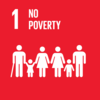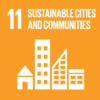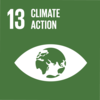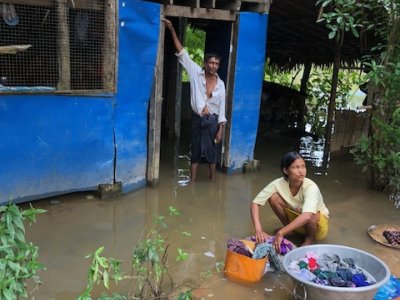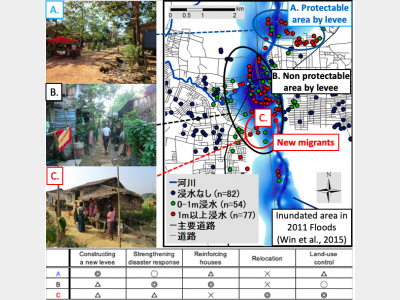Relevance analysis of disaster and poverty in developing countries


Akiyuki Kawasaki
Graduate School of Engineering
Department of Civil Engineering Project Professor
In 2015, 17 goals were set for the Sustainable Development Goals (SDGs), and goal 1 is to “end poverty in all its forms everywhere.” Poverty had long been considered as an issue peculiar to the areas of humanities and social sciences. However, in the same year, the Sendai Framework for Disaster Risk Reduction and the Paris Agreement on climate change were adopted. The important linkage among sustainable development, disaster risk reduction, and climate change was clearly demonstrated, which were often regarded as individual issues until then. The fact that disasters most heavily impact vulnerable populations, such as the poor, is obvious and also has been pointed out. However, inclusive academic research on how disaster, climate change, development, and poverty are related has not yet been investigated. Thus, the overall structure of their relationship and the state of the relationship between each element are not well understood. Among disasters, flood damage is particularly expected to increase in the future due to the effects of climate change. At the same time, poverty is often an issue in flood-prone Asian countries. Therefore, development of effective countermeasures that consider both flooding and poverty is necessary. Nevertheless, there are currently few measures that address the actual conditions of poverty and flooding at a local level. Here, this research aims to conduct a survey in developing countries to understand the characteristics of poverty and the residential distribution of poor residents at a local level. This survey would then be utilized to propose development assistance measures in flood-prone areas. This research proposes a concrete development assistance measure at a local level by evaluating the local situation and the effectiveness of measures that consider both the poverty situations and flood simulation results of flood-prone areas. The study sites are Thailand, Myanmar, Sri Lanka, and Bangladesh.
Research collaborators
- Win Win Zin, Professor, Yangon Technological University (YTU), Myanmar
- Zin Mar Lar Tin San, Professor, Yangon Technological University (YTU), Myanmar
- Yukiko Tahira, Research Assistant, Asian Institute of Technology (AIT), Thailand
- Gouri Silva, Doctoral Student, Department of Civil Engineering, School of Engineering, University of Tokyo
- Akira Kodaka, Project Assistant Professor, Graduate School of System Design and Management, Keio University
- Zin Mar Lar Tin San, Professor, Yangon Technological University (YTU), Myanmar
- Yukiko Tahira, Research Assistant, Asian Institute of Technology (AIT), Thailand
- Gouri Silva, Doctoral Student, Department of Civil Engineering, School of Engineering, University of Tokyo
- Akira Kodaka, Project Assistant Professor, Graduate School of System Design and Management, Keio University
Related publications
- Silva, M.D., Kawasaki, A. (2018) Socioeconomic vulnerability to disaster risk: A case study of flood and drought impact in a rural Sri Lankan community. Ecological Economics, 152, 131-140. doi.org/10.1016/j.ecolecon.2018.05.010
- Win, S., Win, W.Z., Kawasaki, A., San, Z.M.L.T. (2018) Establishment of flood damage function models: a case study in the Bago River Basin, Myanmar. International Journal of Disaster Risk Reduction, 28, 688-700.
- Tahira, Y., Kawasaki, A. (2017) The impact of the Thai Flood of 2011 on the rural poor population living on the flood plain. Journal of Disaster Research, 12(1), 147-157. doi.org/10.20965/jdr.2017.p0147
- Kawamura, G., Kawasaki, A., Win, W.Z., The relationship between flood and poverty: The case study in Myanmar, Proceedings of the Seventh International Conference on Science and Engineering, 2016 (7th ICSE 2016), 888-893, Yangon, Myanmar, Dec. 2016.
- Win, S., Win, W.Z., Kawasaki, A., San, Z.M.L.T. (2018) Establishment of flood damage function models: a case study in the Bago River Basin, Myanmar. International Journal of Disaster Risk Reduction, 28, 688-700.
- Tahira, Y., Kawasaki, A. (2017) The impact of the Thai Flood of 2011 on the rural poor population living on the flood plain. Journal of Disaster Research, 12(1), 147-157. doi.org/10.20965/jdr.2017.p0147
- Kawamura, G., Kawasaki, A., Win, W.Z., The relationship between flood and poverty: The case study in Myanmar, Proceedings of the Seventh International Conference on Science and Engineering, 2016 (7th ICSE 2016), 888-893, Yangon, Myanmar, Dec. 2016.


